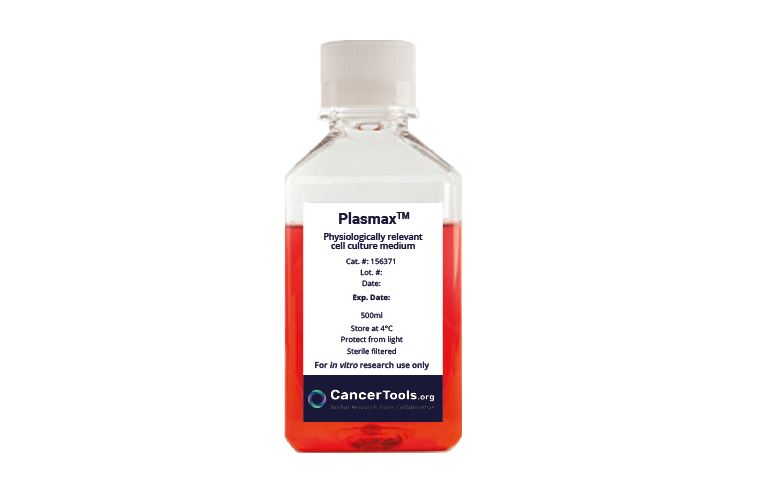Cat. #151672
PEO1 Cell Line
Cat. #: 151672
Unit size: 1x10^6 cells / vial
Availability: 8-10 weeks
Organism: Human
Tissue: Ovary
Disease: Cancer
Model: Tumourigenic
£575.00
This fee is applicable only for non-profit organisations. If you are a for-profit organisation or a researcher working on commercially-sponsored academic research, you will need to contact our licensing team for a commercial use license.
Contributor
Inventor: Simon Langdon
Institute: Cancer Research UK Edinburgh Centre
Primary Citation: Langdon et al. 1988. Cancer Res. 48(21):6166-72. PMID: 3167863
Tool Details
*FOR RESEARCH USE ONLY (for other uses, please contact the licensing team)
- Name: PEO1 Cell Line
- Cancer type filter: Ovarian cancer
- Cancers detailed: Adenocarcinoma
- Research fields: Cancer;Drug development
- Organism: Human
- Tissue: Ovary
- Disease: Cancer
- Morphology: Epithelial; islands of uniform polygonal cells
- Growth properties: Adherent
- Model: Tumourigenic
- Model description: The cell line is tumourigenic in immunologically-deprived CBA mice
- Conditional: Yes
- Description: The PEO1 Cell Line is one of nine from the PE ovarian adenocarcinoma panel (derived from 4 patients at varying stages of ovarian cancer, isolated from various malignant sites, and at various treatment stages) which provides a model system for research into the mechanism of oestrogen action on ovarian adenocarcinoma tumour cells, and for the study of efficacy and toxicity of oestrogen protagonists. PEO1 is an adherent cell line derived from a malignant effusion from the peritoneal ascites of a patient with a poorly differentiated serous adenocarcinoma. The patient previously received cisplatin, 5-fluorouracil and chlorambucil treatment. PEO1 is tumourigenic in immunologically-deprived CBA mice. This is a slow growing cell line, please refer to the sub-culturing notes below.
- Biosafety level: 2
- Additional notes: Please be aware that the originating laboratory of the PEO1 cell line acknowledges that PEO1 is both genetically unstable and derived from a heterogeneous population that was already present in the patient at the time of biopsy. This is evident in the literature (Cooke et al., 2010). Genetic differences within the PEO1, PEO4 and PEO6 cell lines suggest that PEO4 and PEO6 are not direct descendants of PEO1 but have diverged from a common ancestor.
- Cellosaurus id: CVCL_2686
Handling
- Format: Frozen
- Volume: 1 ml
- Growth medium: RPMI-1640 + 2mM Glutamine + 2mM Sodium Pyruvate + 10% Foetal Bovine Serum (FBS)
- Temperature: 37°C
- Unit size: 1x10^6 cells / vial
- Shipping conditions: Dry ice
- Storage conditions: Liquid Nitrogen
- Subculture routine: Split sub-confluent cultures (70-80%) 1:4 to 1:10 seeding at 2- 3 x 10^4 cells/cm2 using 0.05% trypsin or trypsin/EDTA; 5% CO2; 37°C. Doubling time approximately 37 hours
- Mycoplasma free: Yes
Related Tools
- Related tools: PEO6 Cell Line ; PEO14 Cell Line ; PEO14 Cell Line ; PEO16 Cell Line ; PEO23 Cell Line ; PEO1-CDDP Cell Line ; TO14 Cell Line ; PEA1 Cell Line ; PEA2 Cell Line
References
- Cruz et al. 2017. Cancer Genomics Proteomics. 14(1):35-51. PMID: 28031236
- Coscia et al. 2016. Nat Commun. 7:12645. PMID: 27561551
- Matassa et al. 2016. Cell Death Differ. :. PMID: 27206315
- Szikriszt et al. 2016. Genome Biol. 17(1):99. PMID: 27161042
- Huang et al. 2015. Oncotarget. :. PMID: 26683361
- Nevedomskaya et al. 2015. J Proteome Res. :. PMID: 26629888
- Patel et al. 2015. Cell Oncol (Dordr): PMID: 26266765
- Hearn et al. 2015. Proc Natl Acad Sci U S A. :. PMID: 26162681
- Ren et al. 2015. J Steroid Biochem Mol Biol. 150:54-63. PMID: 25817828
- Huntoon et al. 2013. Cancer Res. 73(12):3683-91. PMID: 23548269
- Cooke SL et al. 2010 Oncogene 2,29(35):4905-13. PMID: 20581869
- Sakai W et al. 2009. Cancer Res.15, 69(16): 6381–6386. PMID: 19654294
- Langdon et al. 1990. Br J Cancer. 62(2):213-6. PMID: 2386737
- Langdon et al. 1988. Cancer Res. 48(21):6166-72. PMID: 3167863








